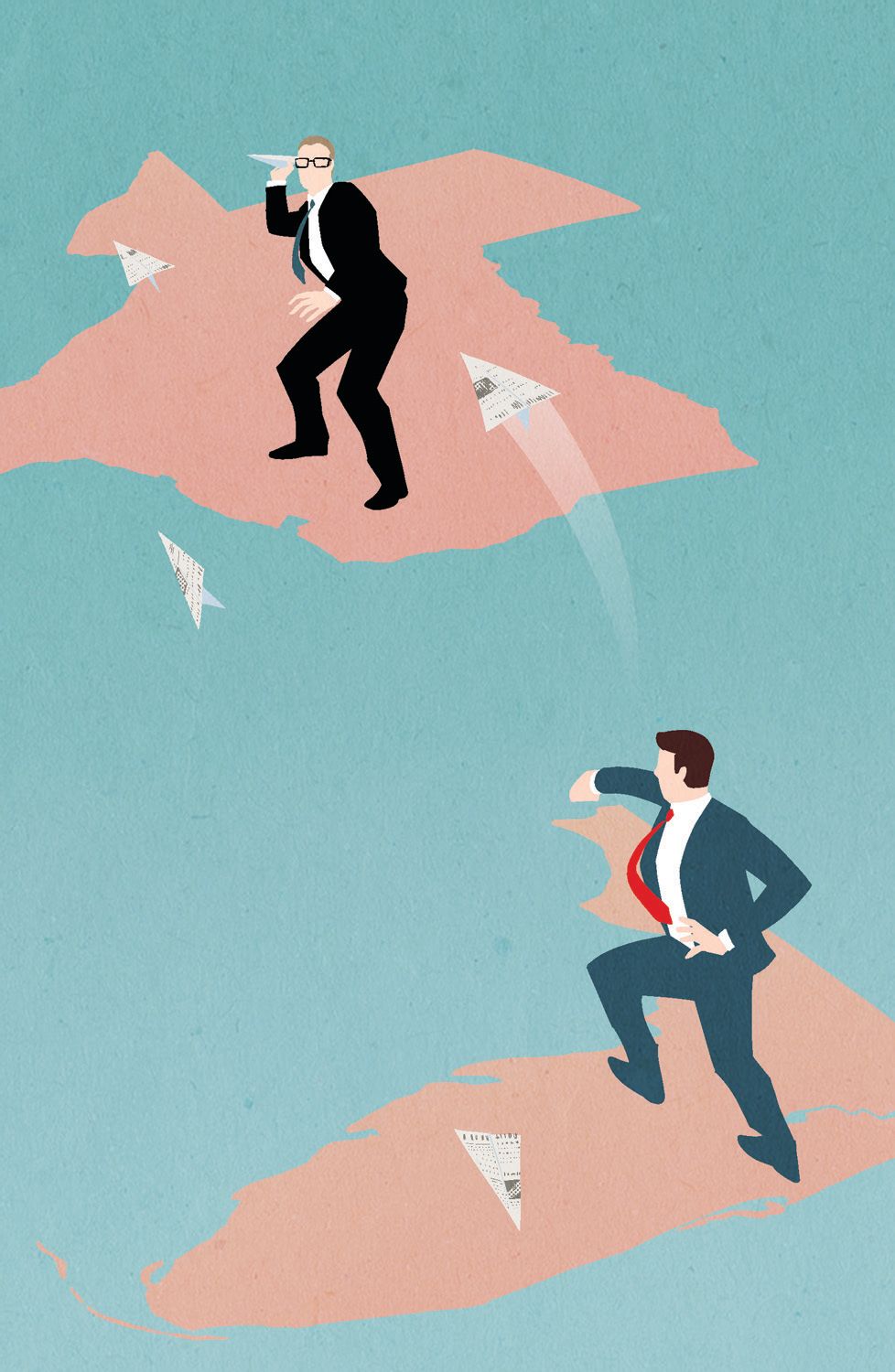See an Error in Our Hometown Paper? Maybe the Blame Lies 943 Miles Away

Image: Rob Jones
In the summer of 1967, I landed my first journalism job, as a reporter for The Hudson Dispatch, a small newspaper in Union City, N.J. The Dispatch—now long dead—had some virtues, but accuracy wasn’t always among them. That became clear the day it ran an editorial denouncing local political corruption, an evergreen topic in the Garden State.
The editorial writer, evidently a student, but not an ardent one, of ancient lore, sought to embroider his arguments by evoking the image of Diogenes, the Greek cynic famed for carrying a lantern in the daylight, in search of an honest man. Instead, he identified the lantern carrier as Aladdin. The error eluded the editors, but not the readers who mockingly cited it in phone calls to our newsroom. The staff was astounded. Who knew that anyone in Hudson County, N.J., had heard of Aladdin, let alone Diogenes?
Mistakes have always been a bane of journalism. (I’m referring to inadvertent ones, not to those purposely planted, as in today’s fake news stories.) But for decades, newspapers had a bulwark against them: the copy desk.
This was manned by editors tasked, in essence, with protecting readers from receiving, and writers from generating, misinformation and mangled prose. Historically, copy editors, the best of whom were steeped in knowledge of arcana like the population of Latvia and the name of Julius Caesar’s mother, checked “facts” they suspected weren’t factual, wrote headlines and captions, corrected grammar, smoothed out sentences and ferreted out errors of logic or omission (such as failing to identify the victimized store in a robbery story).
These days, there’s little time for that because those editors do many other jobs, often related to their employers’ websites. And as print publications are pummeled financially by shrinking readerships and ads lost to online rivals, the final lines of defense are thinning.
When budgets shrink, the copy desk is among the bean counters’ favorite targets for layoffs. Says David Sullivan, a Philadelphia Inquirer assistant managing editor who is vice president of the American Society of Copy Editors: “The question always is: Do we cut back on content, which at least we can sell ads against, or do we cut back on the attention we give to that content?”
The answer is evident to anyone who gets an early print edition of The New York Times, Wall Street Journal or Sarasota Herald-Tribune, which often feature misused or dropped words, repeated sentences or paragraphs, misleading headlines or other foul-ups.
One tactic to trim costs, much favored by news chains such as GateHouse Media, the Herald-Tribune’s owner since 2015, is to fire local copy editors and instead rely on a central editing hub.
Thus, the Herald-Tribune’s copy editing, along with that of some 120 other daily newspapers, is now mainly done in Austin, Texas. That makes it more probable that a story might contain errors of place, because an editor 943 miles away is unlikely to know Sarasota’s geography. More important, hubs are under pressure to work very, very quickly; a former GateHouse executive once said that copy editors’ role “is to move copy as they get it,” meaning in minutes. Perhaps that’s why mistakes seem to have increased in the Herald-Tribune in the GateHouse era. Three typical examples from 2016, all involving headlines, which seem particularly challenging for the Austin crew:
“Lead your investments like Gen. Lee led battle” appeared above a Sept. 22 stock-market column urging investors to emulate elements of Ulysses S. Grant’s Civil War strategy.
“Cowboy’s Gregory not facing suspension” topped a July 28 sports brief that began “Dallas defensive end Randy Gregory is facing a longer suspension over another violation of the NFL’s substance-abuse policy.” (And, to boot, it should have been “Cowboys’,” not “Cowboy’s.”)
“Shiffrini wins World Cup slalom” ran above a Dec. 12 item recounting a victory by U.S. skier Mikaela Shiffrin. Maybe the “i” was added because the race was in Italy.
Mistakes like these might seem petty, but served up frequently, they undermine the credibility of a publication like the Herald-Tribune, even though, in my view, it’s among the nation’s best small-city newspapers.
As Rick Edmonds, the Poynter Institute’s media business analyst, puts it: “People have the reaction that, if you can’t spell my neighbor’s name right, or you’re dishing up these jumbled stories, why should I believe the rest of it?”
Calls and emails to the Herald-Tribune and GateHouse seeking comment for this article weren’t returned. But two of the newspaper’s writers say the deterioration in copy editing is dismaying. Says one: “It’s embarrassing.”
And persistent, as a story published on the first day of 2017 showed:
“Security costs for county will rise” said a subhead in the article on the Trump presidency’s likely impact on the town and county of Palm Beach, where the winter White House is. However, nothing about this was in the story, which was reprinted from the Palm Beach Post. In the original, the pertinent section is in the final three paragraphs. Because the piece was too long for the space the Herald-Tribune had allotted to it, something had to go, and someone simply trimmed it from the bottom.
Not a thoughtful solution, but certainly a quick one that kept the copy moving.
Financial journalist Rich Rescigno is a frequent contributor to Sarasota Magazine.



